The workshop was organised by Defra and the British Embassy in Mexico as part of Defra's International Sustainable Development Dialogue, which focuses on five of the more developed of the developing economies: China, India, Brazil, South Africa and Mexico.
Nuevo Léon is probably the most economically advanced of Mexico's 32 states with a short border with the USA. The state is larger in area than Wales but for the most part sparsely populated. The State population is about 4.5 million, of whom more than 80% live within the metropolitan area of Monterrey.
Although the municipality of Monterrey has a population of 1.1 million, the surrounding municipalities, such as Apodaca, Escobedo, Guadalupe, San Nicolas and San Pedro, are highly dependent on Monterrey for employment, retail and other services.
Landfill in Nuevo Léon
The State of Nuevo Léon has worked intensively on improving its waste management facilities. Nuevo Léon has been assisted by Britain in closing local dumps out in the rural areas and replacing them with properly engineered landfills. To date 22 dumps have been closed and new sanitary landfills established.
Within the State of Nuevo Léon, landfill sites are classified into one of four categories, serving approximately the following populations:
A Sites receiving more than 100 tonnes per day (tpd) >100,000 population
B Sites receiving 50-100tpd 65-100,000 population
C Sites receiving 10-50tpd 15-65,000 population
D Sites accepting less than 10tpd <15.000 population
The standards required for operating these sites become less stringent as the size declines but they are not permitted to accept any hazardous waste. Each of the sites we visited was constructed and managed under the auspices of SIMEPRODE (Sistema Integral para el Manejo Ecológico y Procesamiento de Desechos) a state run and funded waste management company.
The first new landfill site we visited was located in the municipality of Doctor González, named after the doctor, philanthropist, writer and governor of Nuevo Léon, Doctor José Eleuterio González. According to the latest statistics living within its 628km2 there are just over 3,000 people.
The new landfill site which was constructed using funding from Defra is located about 600 metres (m) from the nearest metalled road. The person in charge was Salvador González Salinas, who used to work in an oil installation fabrication plant in Houston. SIMEPRODE's regional manager for the area is Héctor Aguiste Garcia.
The landfill site was hollowed out of the ground previously occupied by the local dump, the residue from the dump having been sent to the Salinas Victoria landfill. The 150m by 150m landfill was excavated to a depth of 6m with the spoil placed around the hole. The site was lined with a one millimetre thick HDPE liner.
There is no equipment on site so, once a week, a tracked shovel is transported to the site in order to push some of the excavated spoil over the waste deposited during the previous week.
The site had a good quality fence and a hut for the site supervisor who works throughout the time the site is licensed to be open, from 08.30-17.00 five days a week and 08.30-14.00 on Saturday. In the landfill site there was a considerable amount of plastic to be seen, including a large number of the refillable plastic containers used to supply water to offices. There was little evidence of any organic waste, because these wastes would have been fed to animals in this very rural area.
According to the statistical analysis subsequently provided by Gustavo Rosiles in his seminar presentation, the site would only take in 1.4tpd of municipal solid waste. Dr Rosiles is the head of SEDESOL, a specialist research organisation providing considerable analysis of the available data on waste in Mexico and estimates where there are gaps. As very little waste is weighed in Mexico these estimates are important.
The second site we viewed was a former dump in Marin municipality, which had been cleared, with the waste again going to the Salinas Victoria landfill. However, from the still smoking remains we saw on our visit, it was evident that the site is still in use for dumping and subsequently the culprits were burning the evidence.
The next site we visited was also a former dump was in Zuazua municipality, again cleared. Despite that clearance, tyres and a limited amount of other wastes were being deposited despite the presence of someone living in a hut on the site.
We then moved onto the Loma Larga regional landfill which services four municipalities: Higueras, Marin, Cinega de Flores and Zuazua. Unfortunately the site is filling more rapidly than planned, mainly due the increased population of one of the four municipalities. The original population of 3,000 has recently risen as a result of building 5,000 social housing units accommodating up to 40,000 people.
Loma Larga is a category C site accepting 80tpd of waste, mainly MSW and some commercial waste. The mobile plant on the site, comprising two tracked shovels, is used to prepare cells for landfill of waste, move waste and place daily cover. As with the first site there was no weighbridge but with good fencing and a single person at the entrance to the site.
Salinas Victoria Landfill and Sorting Facility
The Salinas Victoria landfill and sorting plant covers an area of 212ha and accepts waste from Monterrey and 11 of the neighbouring municipalities. The site was opened on March 13 2000 and the landfill is expected to remain operational until 2022. The site accepts between 4,500 and 5,000 tonnes per day of waste, of which between 1,000 and 1,200 tonnes are initially diverted to the sorting plant.
The sorting plant has four parallel lines of 100m long conveyors with about 20 staff on each line and it operates on a two shift basis. Overall, there are 300 staff on the site, most working in the sorting plant.
The sorting plant was des
The sorting operation takes place through several stages. As the inclined conveyors come up from the pits where the waste has been pushed in by wheeled shovels there is a person on each line taking out gross contaminants, large PET bottles and large sheets of plastic film.
When the waste gets to the sorting hall the staff then select out: paper, cardboard, PET and other plastic bottles, aluminium cans, ferrous and any other metal items and glass in three colours but some is mixed. The cardboard, paper, PET bottles and the plastic film are baled for onward transport to processors.
In the context of what else was happening to reclaim waste from Monterrey and San Nicolas municipalities, Héctor González, the commercial director of SIMEPRODE, showed the contribution of the plant's operation on the second day of the workshop. Analysis of waste loads going into the site provided the information about which collection rounds from those two municipalities were best to be processed through the sorting plant.
The landfill accepts both MSW and non-hazardous industrial wastes with a total of 750 trucks depositing waste every day. The waste is weighed and payment made at a rate of approximately US$4 per tonne for MSW and US$6 per tonne for industrial waste. This is insufficient to pay for the operating costs of the landfill and sorting plant.
Nevertheless the State regards this as worthwhile because lower gate fees reduce the chances of fly-tipping, an argument which was used by UK waste disposal authorities in the 1960s and '70s as an easier alternative to tighter regulation and stricter enforcement.
Héctor González claims that the site has the third largest landfill gas generating facility in the world. There is a sophisticated network of wells and piping to suck the gas (58% methane and 42% CO2) through to the nearby gas treatment plant to run several sets of Jensbacher generators to produce electricity.
The first set of seven generating units provided 7.42MW of power and the next five brought this up to 12.72MW and the next four, which were being hooked up during our visit, will bring the output up to a total of 16.96MW.
The electricity is sold to several customers, including: the metro, water and sewage works and several municipalities for their street lighting. The national electricity company accepts the electricity for distribution but the company negotiates and sells the electricity directly to its customers at a discount of about 10% compared to the national electricity company's prices but has to pay a fee for the transmission costs.
Seminario International de Gestión Integral de Residuous
The formal opening of the conference was supposed to have been undertaken by the Governor of the State. Due to a security emergency, it fell to the sustainable development secretary for the State of Nuevo Léon, Ing Fernando Guiérrez Moreno, to launch the seminar. In his welcome speech he thanked the British Embassy and Defra in sponsoring and contributing to the 'Manual for Comprehensive Management of Waste Management'.
Dr Moreno also referred to the need to adapt current environmental practices in the face of global climate change pressures. Mexico contributes 1.6% to global greenhouse emissions but Dr Moreno claimed that Nuevo Léon was contributing 50% of the reductions that Mexico was currently achieving and “had learnt a lot from British experience”.
Norma Rangel, technical secretary from the Ministry of Sustainable Development for the State of Nuevo Léon, introducing the seminar stressed a number of issues the seminar was designed to tackle, including:
-
the need for payment for waste management services in accordance with the polluter pays principle;
-
the problem and dangers of waste tyres;
-
the necessity to update the State's waste legislation, and
-
affirmed “we should not have dumps”.
While it has been illegal to have waste dumps since 2004 they are still the only disposal option in some of the remoter rural areas of Nuevo Leon. Therefore Norma Rangel announced that each of the delegates would receive a copy of the Defra-sponsored publication, a manual to show what should be happening to waste in Nuevo Léon. The print run was limited due to lack of funds but it is hoped to issue further copies of the guide to waste managers in Nuevo Léon should funding be raised.
The next speaker was Gustavo Rosiles of SEDESOL who was presenting 2009 statistics on waste management in Mexico for the first time. Overall the 100 million-plus population of Mexico generated 105,000 tonnes per day (tpd) of MSW, up from 86,000tpd in 2000. “At a compaction ration of one tonne to 1m3 it would therefore take only 10 days to fill the Aztec Stadium in Mexico City” according to Dr Rosiles.
Nuevo Léon's daily generation rate is estimated at 5,400 tpd with each person producing an average of 1.082kg, higher than the national average due to higher income levels in Nuevo Léon.
Jorge Alberto Rodriguez, public services secretary for Monterrey Municipality, examined Monterrey's lack of success with its 'Ecologica Ruta', a collection system for recyclables provided by the municipal waste collection company, PASA.
The service is currently provided to 254 neighbourhoods out of the 977 within Monterrey and started in June 2008. A further 123 neighbourhoods (21,540 families) will be added later in the year. Only 9% of households currently participate in the weekly collections of dry recyclable wastes.
The 9% of families participating in the scheme generate 75 tonnes each month, of which 33% is paper, 30% cardboard, 3% PET and 1% glass. In addition there is a massive 27% of non-recyclable wastes. So why has this initiative been so unsuccessful?
Senor Rodriguez blamed a lack of promotion, no radio or TV advertising and that people did not understand why they ought to recycle. Personally I also think that the absence of specific distinctive containers for collection of recyclables means that people are less likely to have reinforcement of the fact that they are expected to participate because it appears no-one else is.
In Nuevo Léon the municipal waste collection concessions are awarded for five years and in the discussion sessions some participants argued that the service contract should include the provision of containers.
They also offer waste collection services to households trying to get rid of bulky wastes and to retailers attempting to avoid the municipality's waste charges. These cart operators now have to register with the Monterrey Municipality.
In addition there has been the provision of bulk containers to certain groups of cart operators so that waste can be placed by the operators into these and then Monterrey bears the cost of the waste disposal.
The City of Monterrey has an inspection team checking whether retailers have a contract in place for the collection of their waste. In three years the team only managed to cover half the total retail outlets.
Where a retailer is found not to have a contract then they are required to enter into one and a record is kept and a notice has to be displayed in the front window of the shop. Inspectors also check on the content of dumped waste in order to try to identify the source of the waste. All these aspects are very similar to UK procedures.
Another problem is the Monterrey 'favelas', amounting to about 100,000 people in total who do not receive a waste collection for several reasons, such as their illegal occupancy, inadequate and steep tracks through the sites. Often waste generated in these neighbourhoods is dumped in the nearest ravine or stream.
Gustavo Pantoja from the town of Nuevo Laredo in the neighbouring State of Tamaulipas described the award-winning scheme he had set up for the collection of hazardous wastes from households and small- and micro-industrial generators of hazardous wastes.
The need for this initiative was demonstrated quite dramatically when, in May 2005, the town's internationally funded waste water treatment plant was found to have used oil in its main supply pipeline and it cost Mex$2m (£100,000) to clean out.
Not surprisingly the largest waste stream coming through the temporary collection sites, all located within a five-minute travel radius of fire stations, is oil with 160,000 litres collected to date. 5,000kg of lead-acid batteries have been collected and more modest amount of portable batteries.
Ing Pablo González dealt with the processing of organic waste through the use of worms. Dr González showed that using the Californian Red – which is a very prolific species of earthworm – and keeping them at an ideal temperature of 20oC and 80% humidity, large amounts of organic wastes can be processed to provide valuable worm cast compost.
Onions and spices have to be kept out from the organic waste in order to keep the worms happy, perhaps one of the unfortunate consequences of using the Californian Red rather than a Mexican species!
Further Perspectives on SIMEPRODE's Operations
The two opening sessions on the second day were mainly devoted to SIMEPRODE's recycling and energy recovery activities. The environmental manager, José Manuel Vázquez Juárez, started by examining the waste being generated in the Monterrey area. Its principal contents by percentage are:
-
Glass 2.28 and declining
-
Plastics 12.67 and rising
-
Card/paper 15.35
-
Organics 42.61 and lower than the Mexican average of 53%
-
Aluminium 0.09
-
Other metals 2.25
Of these constituents Senor Juárez estimated that 32.64% had a commercial value for recycling. These 0.28kg of waste would be valued at Mex$0.63 (£0.03).
Realising the value from these recyclable components was achieved in a number of ways. Prior to collection the 'panadores' with their carts, tricycles and bicycles were extracting most of the aluminium cans and the cardboard set out by households and businesses, with an estimated 3% of the total waste stream separated by these people, similar to the proportion of MSW separated out by the 'cartoneros' in Buenos Aires, as Jeff Cooper confirmed in his subsequent presentation.
The waste collectors themselves are estimated to segregate a further 7.5% of the reclaimable waste prior to delivery to SIMEPRODE's facilities and 5.6% is separated out at the plant. This means that only 16.1% of the total reclaimable dry wastes is estimated to be recovered and 16.54% of potentially reclaimable waste is left for disposal.
Of the 1,200tpd processed through the SIMEPRODE sorting plant on average, just 54 tonnes each day is reclaimed for onward processing, which includes just 30kg of aluminium, predominantly in the form of beverage cans.
A problem with tyres
In a storming concluding presentation Norma Rangel from the Sustainable Development Secretariat of Nuevo Léon examined the problem of tyres in Nuevo Léon. There are estimated to be a million part-worn tyres sent across the Mexican border from the USA every month for onward sale.
The problem has been exacerbated by the action of the State of Texas. In 1997 Texas abandoned its state-wide practice of a mandatory $2.00 tax on the retailing of new tyres in order to fund the proper disposal of scrap tyres and replaced it with a voluntary charge but only where cities and townships legislated for this.
Most Texans faced with a voluntary $2.00 charge per tyre and probably driving a pick up truck as vehicle of choice for most of the population would take the old tyres away. This is very different to the UK with its long-standing voluntary £1-2 tyre “green fee” which the vast majority of people pay quite readily because they would not want their old mucky scrap tyres anywhere near their nice clean car.
In Mexico their scrap tyres are dumped by most people anywhere because most of the tyre retailers will pass the tyres back to their customers. These tyres after dumping are then often burnt to release the steel reinforcement, which can then be sold to scrap metal merchants. The pollution caused affects both the environment and potentially even the health of the perpetrators but realises a net Mex$1.00 (£0.05) for the 1kg of steel produced.
At present municipalities end up with dealing with the problem of disposing of most of these tyres when they are discarded. However, as with other aspects of waste management in Nuevo Léon, the State has taken on responsibility for dealing with problem with scrap tyres being delivered to the Salinas Victoria site where SIMEPRODE either sends them whole or shreds them to send them to cement kilns as a secondary fuel and substitute raw material source (the ferrous content).
SIMIPRODE was awaiting delivery of a new mobile tyre shredder so that in future tyres can be sent out with less air space in the trucks used for their transport.
Jeff Cooper showed that while the problem of dumping of tyres was now minimal in the UK, nevertheless it had taken a long time to eliminate the worst dumps. It was only recently with the adoption of voluntary product stewardship and use of reverse logistics to return used tyres from retailers to warehouses that the system could now be regarded as robust from a regulatory perspective. The charge for replacement tyres to be used for proper disposal through a wide range of recovery mechanisms was still essential.
Lessons from Mexico
There were a number of interesting points made both during the presentations and in the Q&A sessions. Notable were the contributions from Prof Dora Luz Núnez Gracia, now working for the Monterrey municipality, who showed that, with sufficient community support, it was possible to establish waste reclamation projects with little resource but it did need someone to initiate the project, garner sponsorship and inspire people to collect the PET, glass containers or anything else where a market outlet had been identified.
She was also concerned about the welfare of the horses and donkeys drawing Monterrey's carts although she could not identify who would take on the responsibility for this task.
Hector Chavez, director of public works for the City of Eagle Pass, represented the two communities which sit astride the Rio Grande and which have a joint waste management arrangement. He showed that it was possible for waste management to be operated jointly across the international frontier.
Because there are many very small municipalities among the 51 in the State of Nuevo Léon often they cannot afford even a truck to collect the refuse. Just as there are landfills which now service more than one municipality so it should be possible to arrange collections jointly.
Disposable nappies are a substantial proportion of the waste in both Mexico and the UK. While Birmingham will be the base for the first of a proposed network of high technology nappy recycling plants (KnoWaste) there was a low tech solution proposed by one of the seminar participants as an aid to tree growth.
Finally, even within Monterrey itself there is an interesting example of recycling, the Steel Park, which since three years ago is now linked to the heart of the city by a 3km artificial river and walkway.
Monterrey's steelworks was shut down more than 20 years ago and the site was turned into a park with cycle and jogging tracks, children's play areas and open air leisure venues and cafes. The city retained a number of the buildings and equipment from the old steelworks and there is an interactive steel museum, rather than what normally happens in Britain, total clearance.





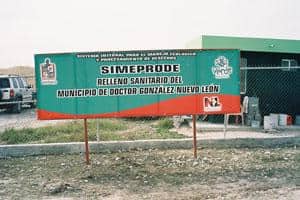
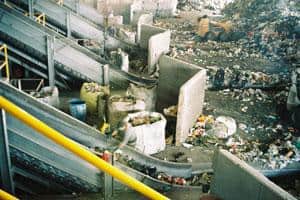
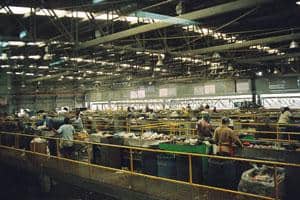
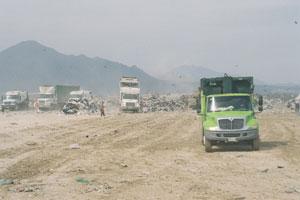
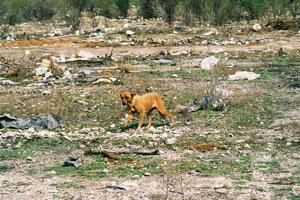




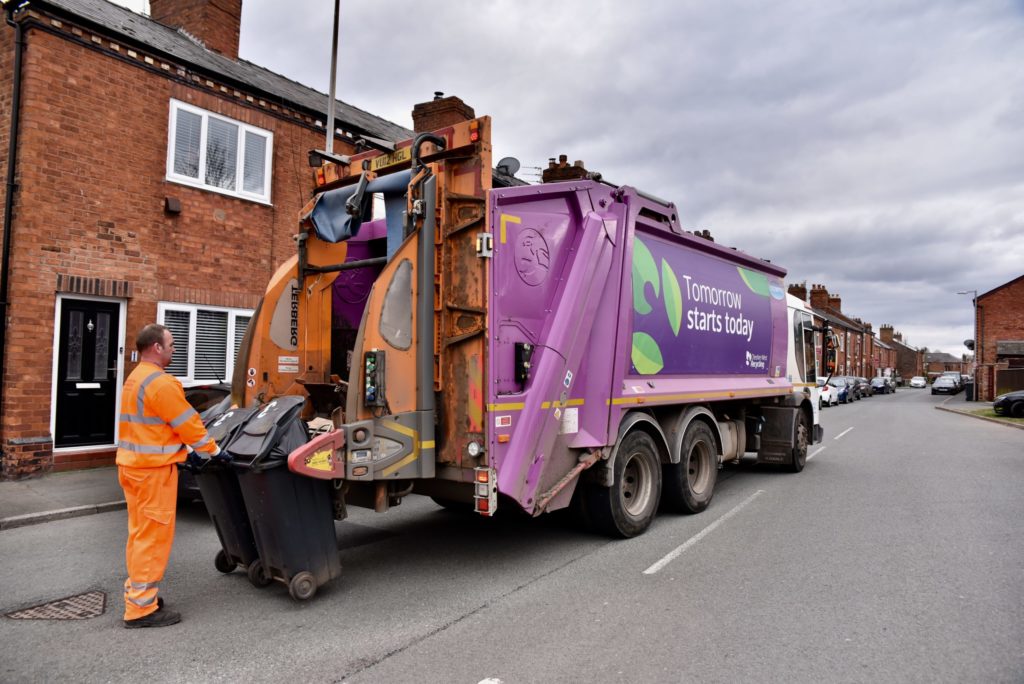


Subscribe for free